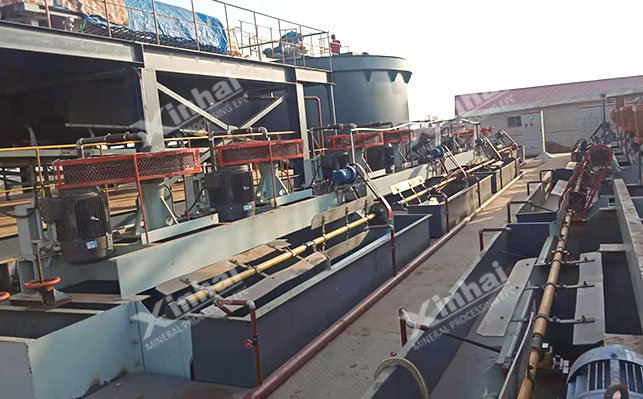In the mineral processing industry, flotation technology is widely used and applicable to various ore types. Flotation equipments play a critical role as core equipment in the beneficiation process. However, there are numerous flotation equipment models to choose from, and selecting the right model depends significantly on the nature of the ore, required air volume, production scale, and process complexity. In this article, Xinhai Mining Equipment provides recommendations for suitable flotation equipment models under six different scenarios to simplify the selection process and help you quickly identify the right model.

1.Small-Scale Production with Complex Process
For beneficiation plants with a small production scale and complex processes, it is recommended to use self-priming air and self-priming slurry flotation equipments, such as the SF series or BF series. The SF series flotation equipment has been widely adopted and proven to be effective, while the BF series is an improved version of the SF series and is recommended as a priority choice.
2.Large-Scale Production with Simple Process
For medium to large beneficiation plants with relatively straightforward processes, the KYF series flotation equipment is a good choice. This mequipment has been widely promoted and used, as demonstrated by examples like the Mu Ding Dong Mine, which saw a 1.22% increase in copper recovery and a 43.85% reduction in power consumption when using the KYF-16 flotation equipment, and the Yinshan Lead Ore, which achieved a 0.67% increase in lead recovery and a 1.94% increase in zinc recovery with the KYF-8 flotation equipment. The KYF flotation equipment is now available for various mining applications.
3.Need for Stable Operation without Foam Pumps
For beneficiation plants that require stable liquid levels during flotation operation and prefer not to use foam pumps, the SF-JJF or BF-JJF combined unit is recommended. This setup involves using SF or BF flotation equipments as the intake slot and JJF flotation equipments as the direct flow slot, taking advantage of the strengths of each equipment. It has gained popularity among users for providing stable operation.
4.Large Air Volume Requirement with Adjustability
For beneficiation plants requiring a significant and adjustable air volume during flotation, particularly for KYF series equipments, but without the desire for a stepped configuration or foam pumps, the XCF/KYF combined unit is suggested. The XCF flotation equipment serves as the intake slot, while the KYF flotation equipment functions as the direct flow slot. This combination with pneumatic mechanical agitation flotation equipments has elevated the development of these equipments to a new level and has achieved impressive results in energy savings, reduced oil consumption, and improved technical indicators.
5.Upgrading Existing "A" Type Flotation Equipments
For small to medium-sized beneficiation plants that have previously used "A" type flotation equipments and are interested in upgrading but lack the funds for a complete replacement, or for plants where "A" type equipments have been used for a relatively short time and are in good condition, the XJZ flotation equipment is a suitable choice. In this scenario, the first cell in the operation still uses the original "A" type equipment as the intake slot, and only the impeller and stator of the original flotation equipment are replaced in the subsequent direct flow slots. This approach achieves the goal of using the more efficient new flotation equipment while saving on labor, materials, and costs.
6.Focus on Energy Efficiency and Environmental Protection
To optimize energy savings and environmental considerations in operation management, it is advisable to design the flotation plant selection system with larger system capacity and bigger flotation cells. For rough scavenging operations, it is generally appropriate to use 3-6 cells. This approach not only saves plant floor space but also reduces labor requirements, energy consumption, and reagent usage. It improves flotation performance, facilitates operation management, and contributes to enhanced beneficiation performance.
In summary, the six scenarios outlined above provide recommendations for selecting appropriate flotation equipment models. Do you now have a better understanding of how to choose the right flotation equipment model for your specific situation? If you have any further questions or if none of the scenarios match your needs, please feel free to contact Xinhai, and we can discuss the flotation equipment model that best suits your beneficiation requirements.